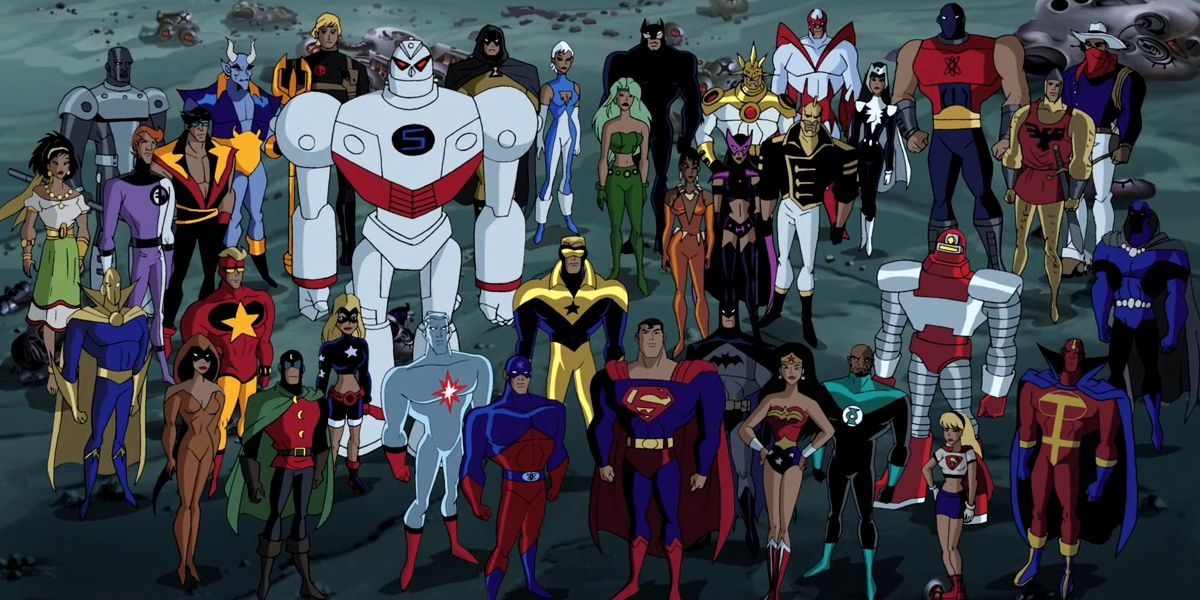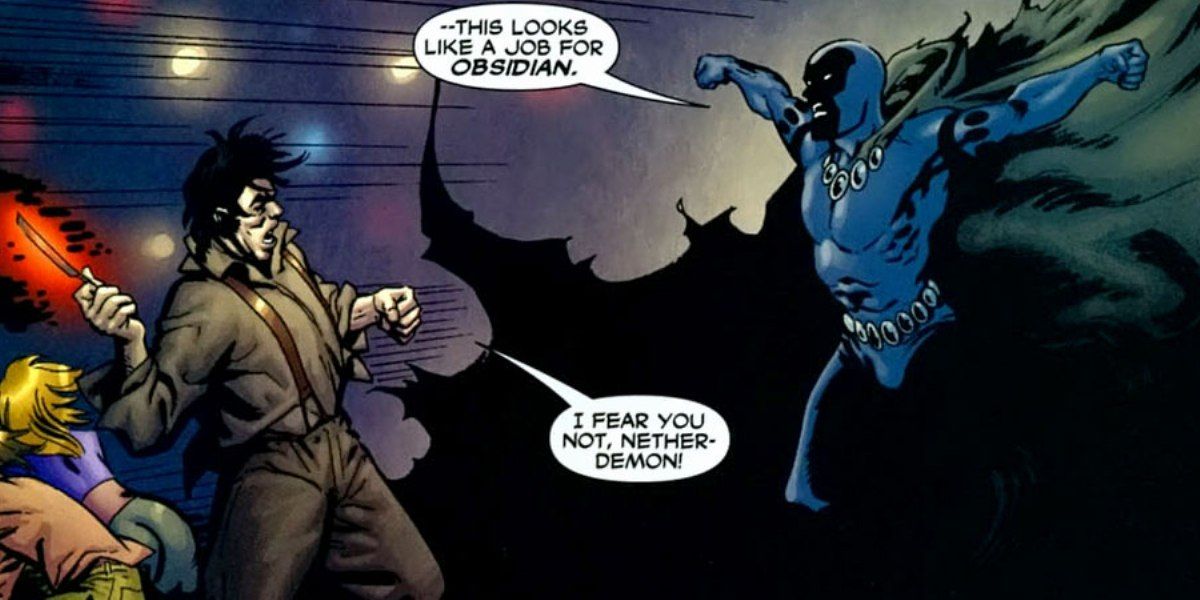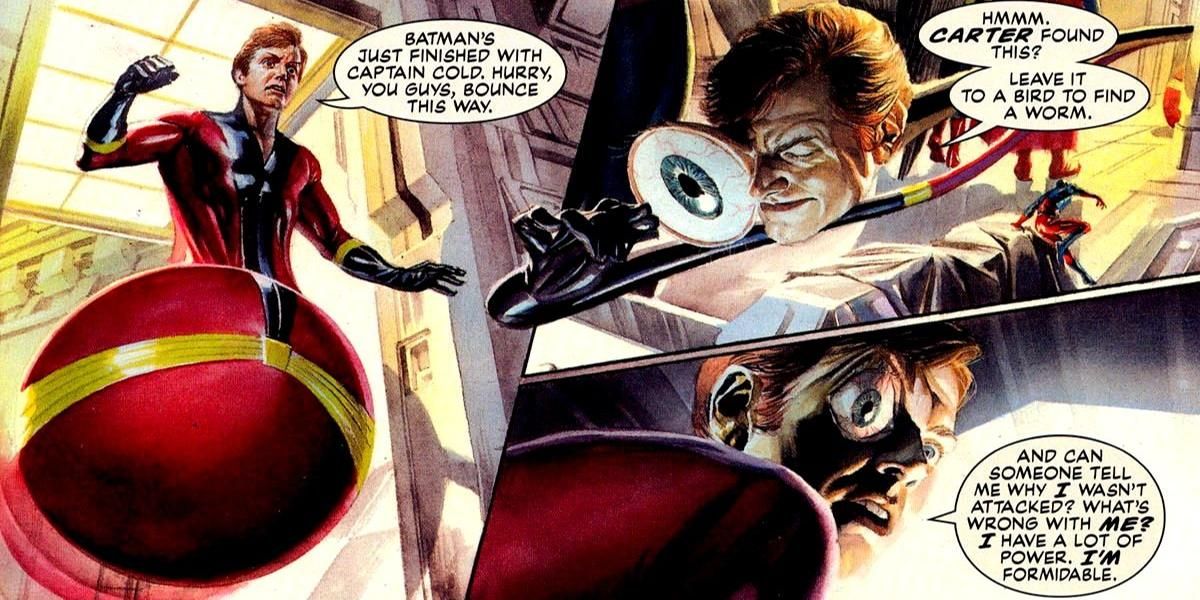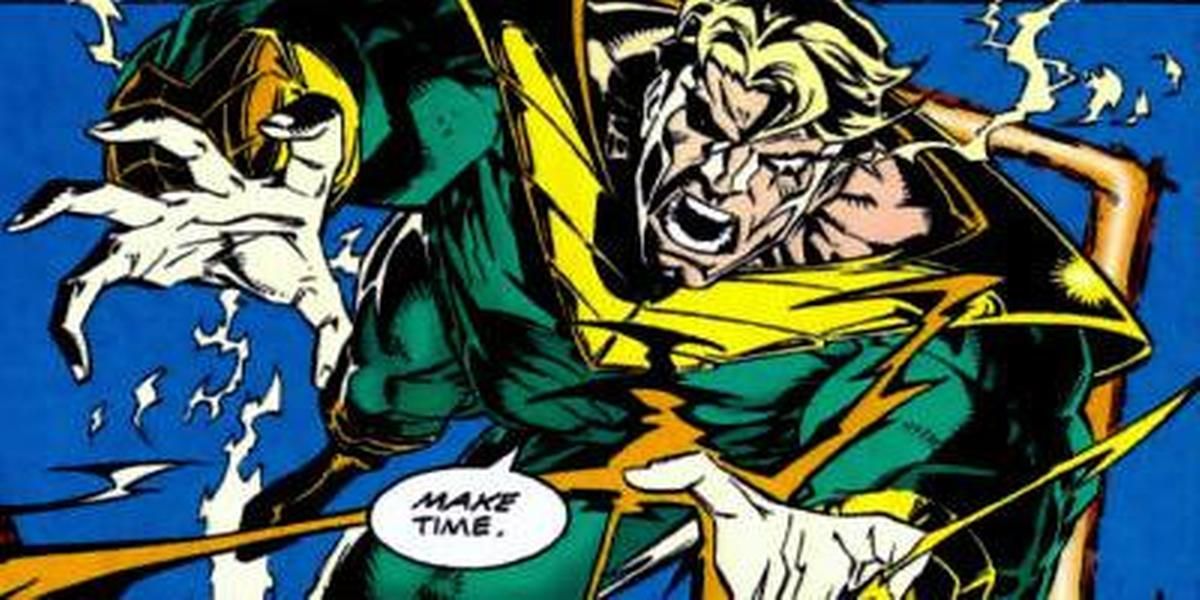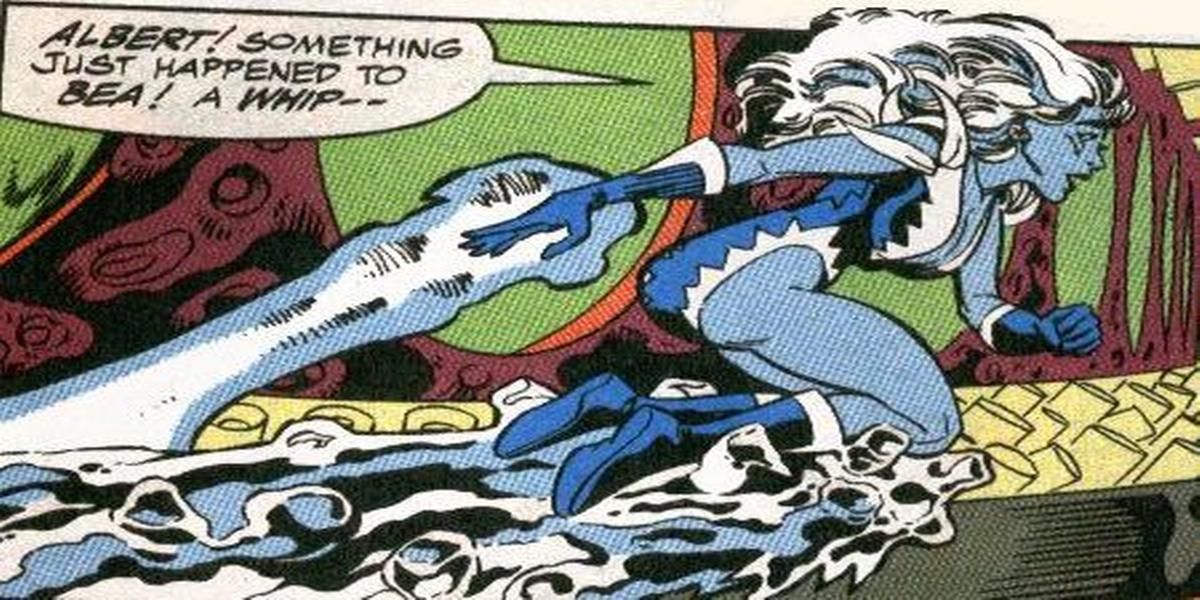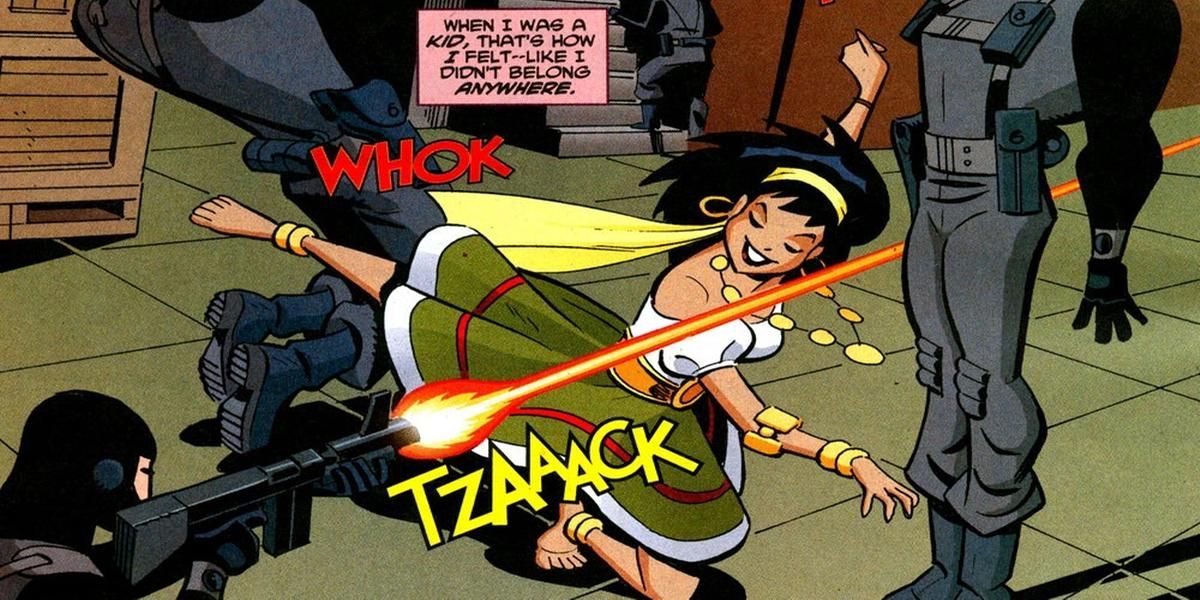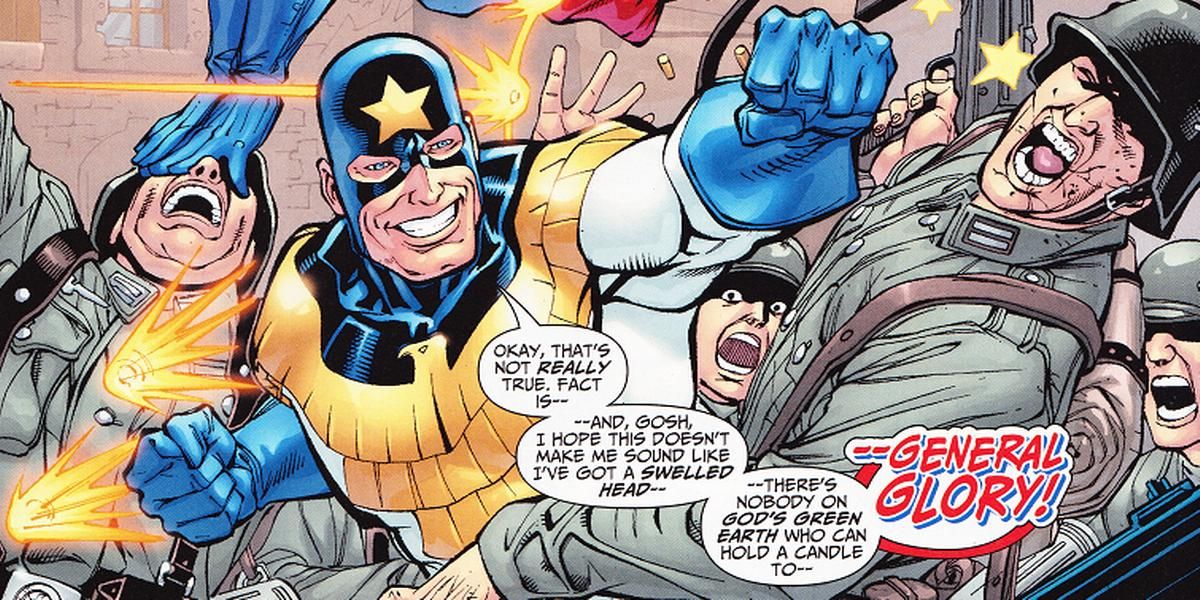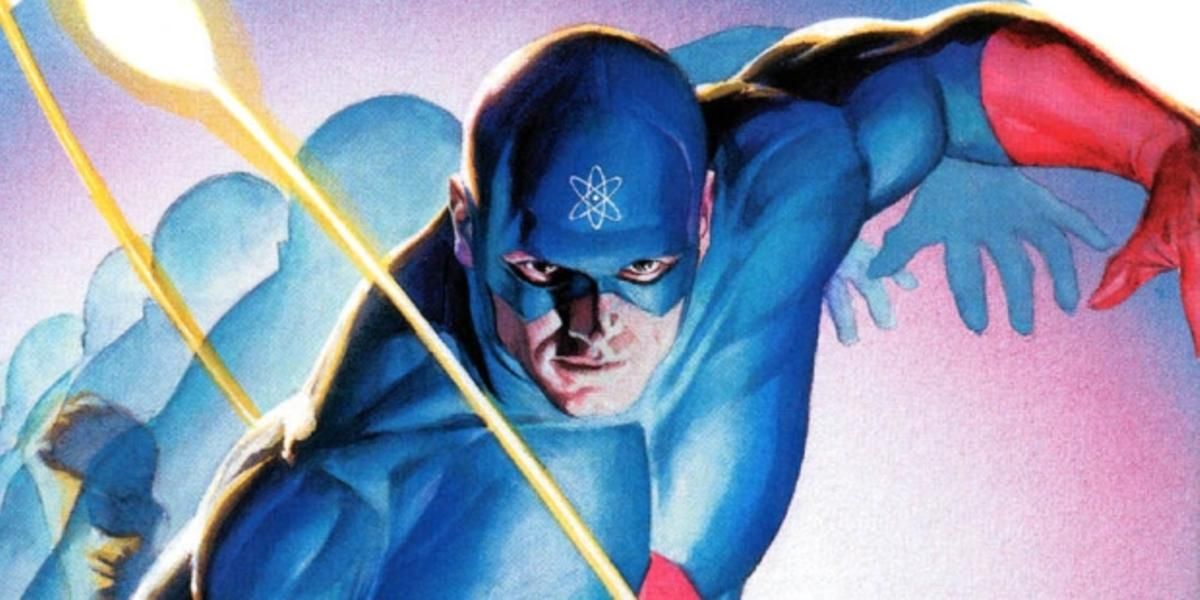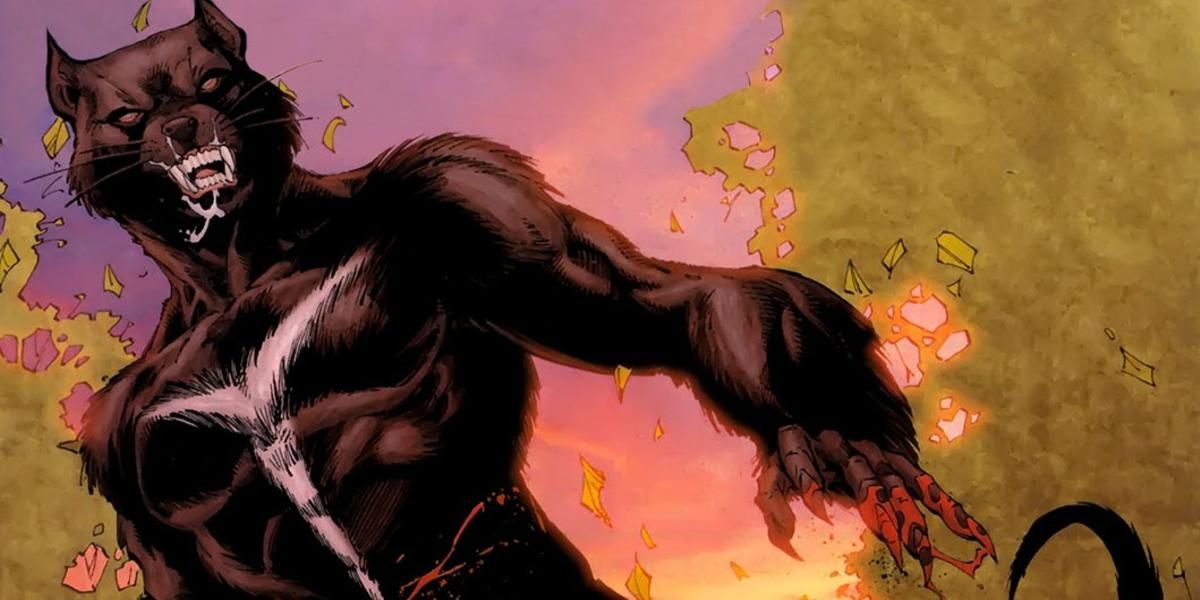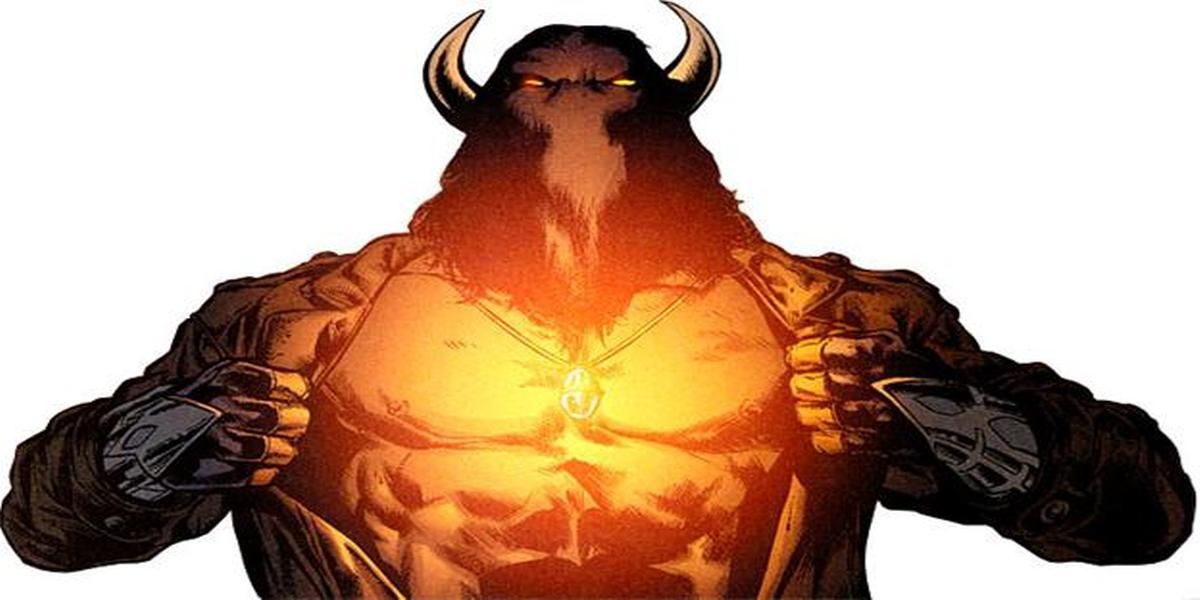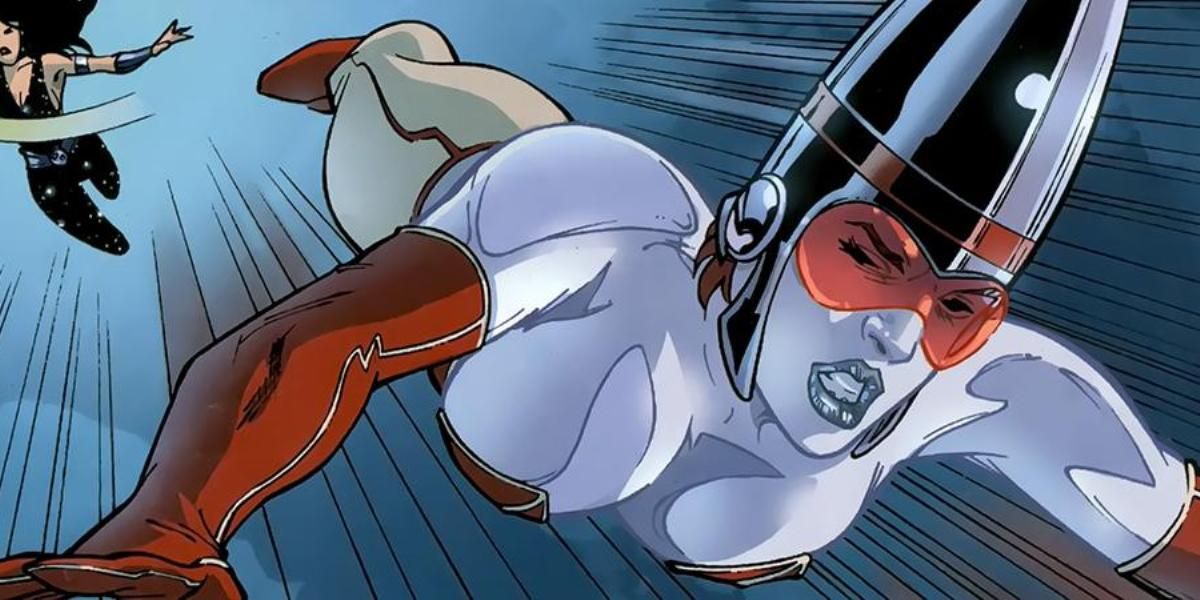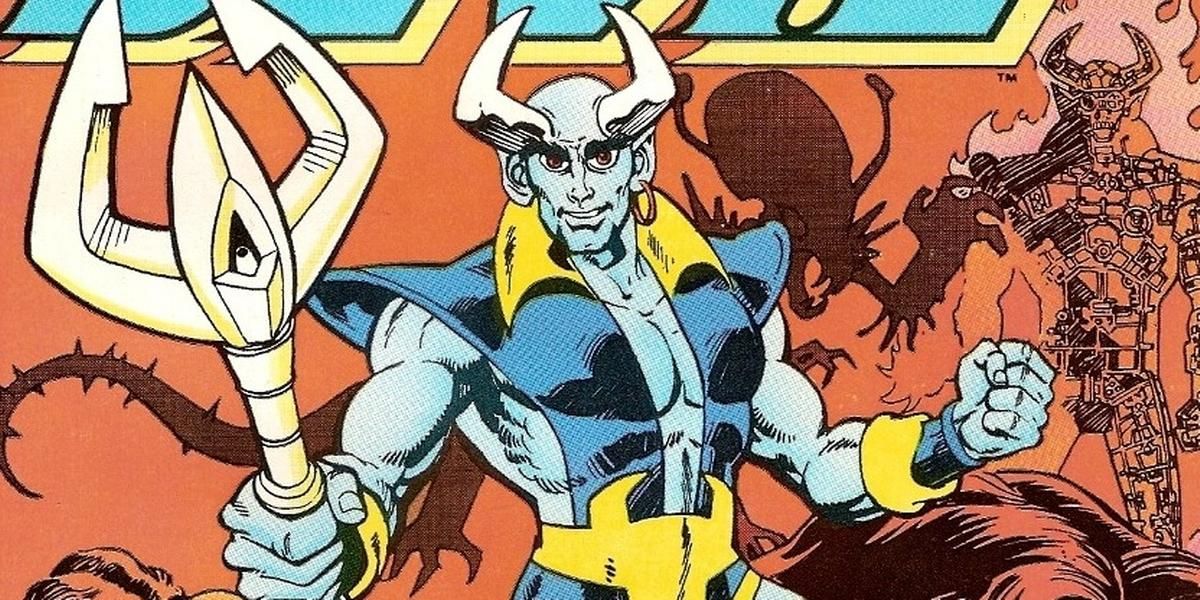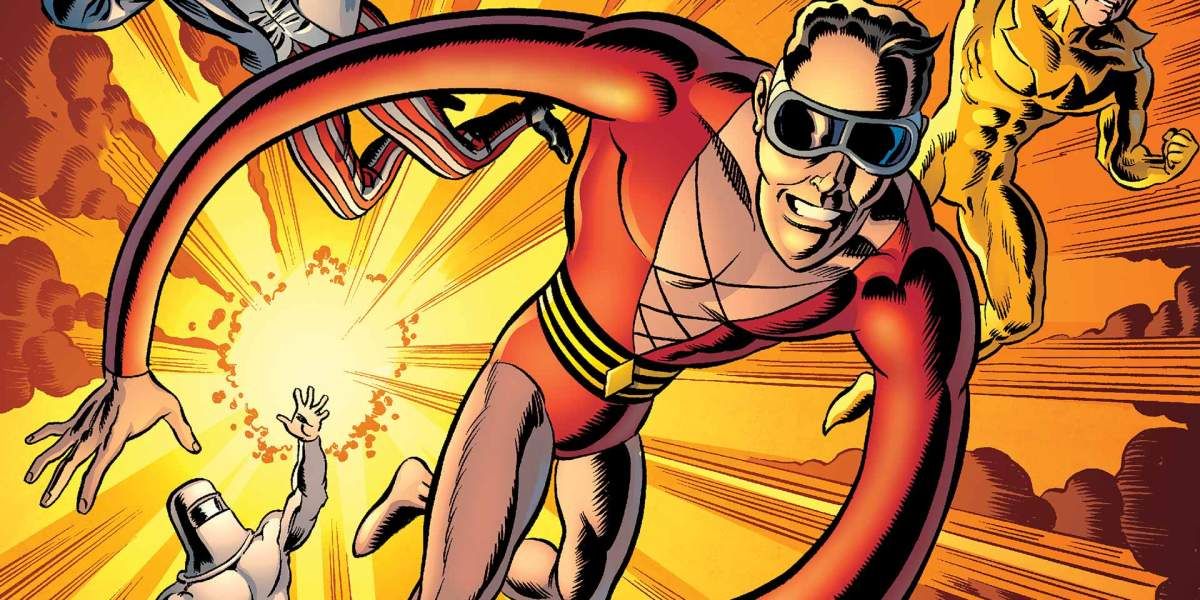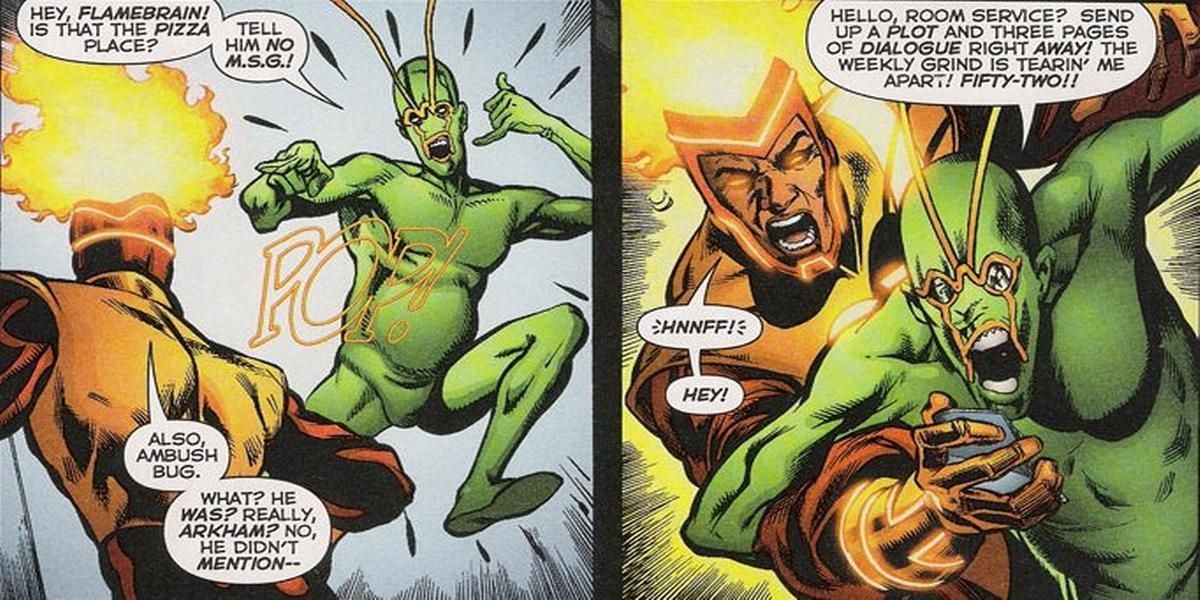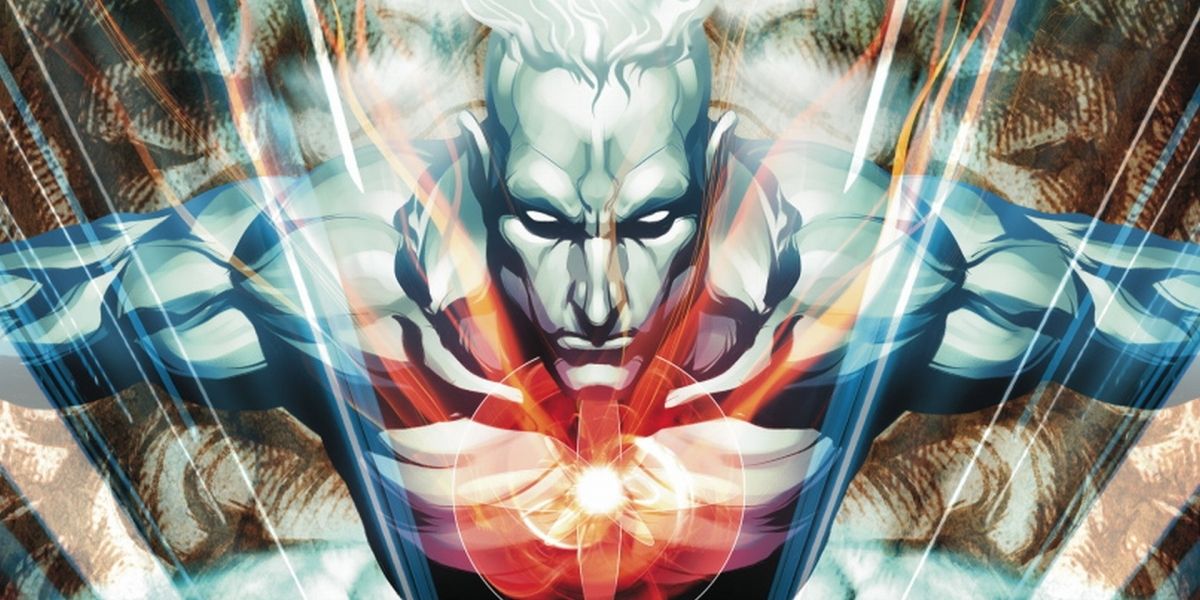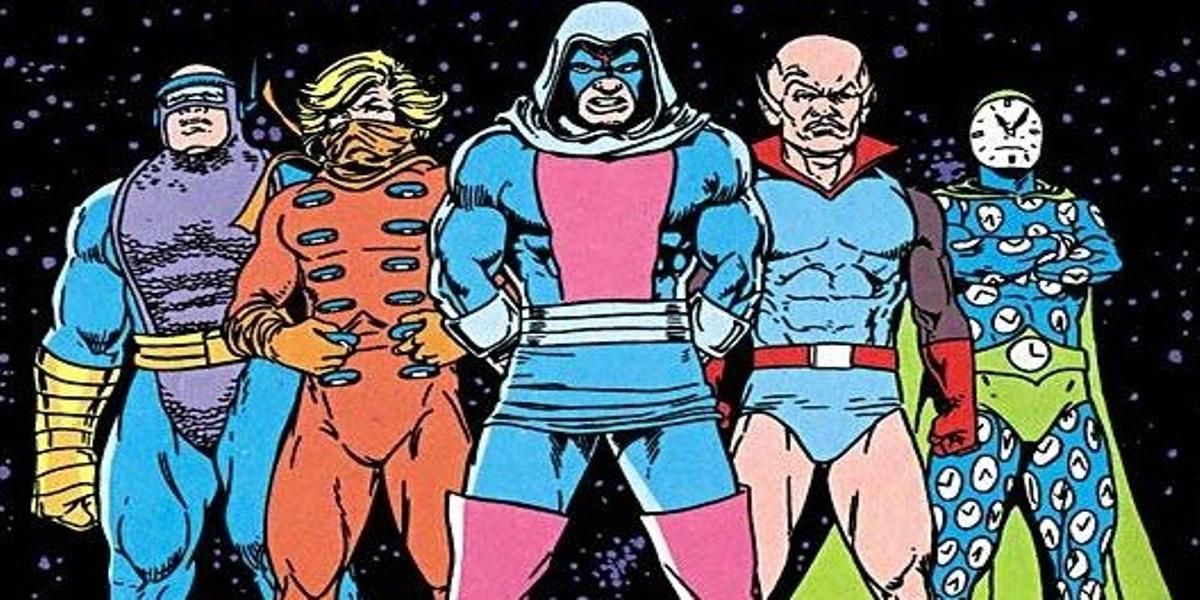Since the team's debut in 1960, the Justice League has enlisted many of DC Comics' heroes to protect the planet. With an ever-changing roster as well as new alliances and partnerships forming all the time, there's never been a shortage of heroes to love in the pages of the Justice League books.
After the success of the Marvel Cinematic Universe, Warner Bros. moved to jump-start their own extended universe with Man of Steel and the upcoming Batman V. Superman: Dawn of Justice. This all leads up to a Justice League movie in 2017, featuring iconic characters, Batman, Superman, Aquaman and Wonder Woman teaming up to fight a bigger evil.
There's no way of knowing who will be surviving DC's current film slate, but odds are the roster of the Justice League is going to have to change at some point. Unfortunately, not every hero to have joined the team over the years is going to be able to make the jump to the big screen.
Rules
The point of this list isn't to bash anyone's favorite character. It's to examine favorites from over the years and determine which ones aren't likely to be adapted for DC films.
Geoff Johns has gone on the record saying that television characters will not be crossing over to the movie, so nobody is guaranteed entry. Additionally, Vertigo characters will be developed by New Line as a separate universe, so characters with heavy ties to that branch weren't considered either.
So, without further ado, here are Screen Rant's 15 Justice League Members Who Will Never Be Featured in DC Movies.
Obsidian
Todd Rice isn't as famous as either of his parents: Alan Scott, the original Green Lantern, or Rose Canton, the villain known as Thorn. Raised in an abusive adoptive home, Todd would eventually escape and meet his twin sister, with the pair mastering their powers and joining Infinity, Inc., a group of younger heroes related to members of the Justice Society of America. Utilizing shadow-based powers, Obsidian can possess other people’s shadows, phase through solid matter and even fly. He also has enhanced strength and eventually gains the ability to manipulate shadow in a manner similar to the Green Lantern’s solid light constructs.
Some might see his father's moniker and and get their hopes up, but Alan Scott is not technically a member of the Green Lantern Corps. As such, his existence in the DC film continuity is unlikely, with no announced plans to introduce the multiverse. The Flash is set to introduce Earth-Two in its second season, making it far more likely for Alan Scott - and possibly his children - will be adapted for television.
Elongated Man
Ralph Dibny grew up captivated by contortionists, fascinated by the way they could manipulate their bodies. Utilizing the detective skills that would eventually make him a great hero, he realized that all of the performers were drinking a soda called ‘Gingold.’ Exploring the chemistry of the drink, Dibny managed to make a concentrated dose of the main ingredient, the ‘gingo’ fruit, and by drinking it, he unlocked his latent metahuman abilities. Granted the ability to stretch his limbs to impossible lengths as well as increased durability, Dibny fights crime as the Elongated Man.
Ralph Dibny has become something of a cult favorite character, playing pivotal roles in both the "Identity Crisis" and "52" comic series. Unfortunately, with the upcoming release of a third Fantastic Four film, the character would likely come across as an imitation of Mr. Fantastic (not too attractive, given that franchise's big screen struggles). The hero's best stories also hinge heavily on the love between he and his wife Sue - a storyline which would be better suited for TV where their lives can be more thoroughly explored.
Triumph
You may not know it, but William MacIntyre is one of Earth’s greatest heroes... at least he should be, if you're asking his opinion. When his criminal father was arrested by the hero Hourman, William was motivated to become a superhero. With the power to control the full electromagnetic spectrum, he has the potential to be one of the most powerful heroes in the DC Universe (though his powerset has never truly been defined). And in the 1994 "Zero Hour" series, Triumph was retconned into being a founding member and leader of the Justice League - a fact forgotten once he was trapped in limbo.
Triumph’s story is a tragic one, with the hero eventually finding out that neither his life nor his absence has had any effect on the world. It’s heartbreaking in the comics, but only because it plays out over a number of years. DC won’t be including Triumph in their Justice League film, even if it would be worthwhile to see a hero shunned to the point of selling supervillains items he stole from old teammates just to make ends meet.
Icemaiden
Sigrid Nansen was just never a good enough scientist to impress her mother; a fact that motivated her to join experiments run by the Norwegian Government in an attempt to recreate the ice-related powers of a legendary tribe of Ice-people. Surprisingly, the experiments actually worked, with Sigrid taking on the name Icemaiden as a member of the Global Guardians. She has limited powers surrounding ice and snow, with the ability to control it in small quantities (and can project ice shields from her body into a form of ice armor).
The idea of a government-sponsored team of superheroes is consistent with the direction of the DCEU. However, it’s doubtful that they’ll be bringing lesser known characters from Northern Europe into the fray. Icemaiden doesn’t present many interesting storytelling aspects outside of that team, proving that not every Leaguer has staying power.
Gypsy
Cynthia "Cindy" Reynolds lived a mostly suburban life until her powers began manifesting at the age of 14. Buying a bus ticket for Detroit soon after, Cindy puts her powers of illusion to work keeping her safe on the city streets. She eventually joins a branch of the Justice League that opens in Detroit, first using their security system to test out the limits of her powers, until she joins them in bringing down an enemy and is invited to join. She continues to jump from team to team and her powers of illusion continue to grow, allowing her to make her teammates invisible at will.
Let’s get this out of the way: Cindy Reynolds may be a descendant of the authentic Romani people, but her moniker is still controversial at best. Draw your own conclusions about the term, but many consider ‘gypsy’ to be a slur. As such, it’s doubtful that Warner Bros. will be adapting this character, especially when there are other heroes that could fill the role of a magic user.
General Glory
Joseph Jones was your typical American soldier during World War II... who was granted enhanced strength and durability by Lady Liberty, an America-themed superhero. From there he became a government agent, with his adventures published in comic books for the folks back home. Jones eventually disappears on an arctic mission, eventually returning with no memory of his past. It isn’t until he rediscovers the General Glory comic books in the modern era that he regains his powers, realizing his true calling and joining the Justice League as a Golden Age hero, as much for the League’s publicity as Jones’ utility.
If that story sounds at all familiar to you, you’re in on DC’s joke. General Glory was created as a parody of Marvel’s Captain America. The character’s patriotic values are often incredibly exaggerated, going on long tirades about liberty and patriotism rather than fighting criminals. DC and Marvel are fine with poking fun at each other in their comics, but there’s no way Warner Bros would be willing to parody one of Marvel's biggest characters on such a massive scale as the DCEU.
The Atom
Dr. Raymond ‘Ray’ Palmer is a physicist and professor who specializes in matter compression. His intentions are noble, seeking a way to solve the problems of overpopulation and food shortages. Ray utilizes the matter from a white dwarf star to create a lens that allows him to shrink any object. However, the small objects are destabilized on a molecular level and explode after a short period of time. He eventually discovers a compression matrix that allows him to shrink himself without risk while retaining his natural strength, paving the way for him to fight crime as 'The Atom.'
A version of Ray Palmer (portrayed by Brandon Routh) had a recurring role in the third season of Arrow and is set to take part in the upcoming crossover series DC’s Legends of Tomorrow. Unfortunately, the character is destined to remain on the small screen for the foreseeable future. The Atom is a fantastic hero, but it would take longer to capture that greatness than a two hour movie could allow. Additionally, with Marvel’s Ant-Man release, it’s hard to justify bringing such a similar character into DC’s movie universe anytime soon.
Tasmanian Devil
The Australian wild man Hugh Dawkins was born with a truly troubling ability: to transform into a giant, intelligent Tasmanian Devil. Athough the actual source of his powers has not been explicitly determined, the two sides of the character - as you'd expect - represent conflicting sides of Hugh's personality. When he’s in human form, Hugh is a vegetarian and a pacifist. When he transforms, he becomes an aggressive beast with a hunger for blood and violence. Thankfully Hugh puts those efforts to good use, working as a superhero in Tasmania for a few years before joining the team known as the Global Guardians and eventually, the Justice League.
Werewolves are undeniably cool, but are were-Tasmanian Devils? Frankly, yes. Therianthropy has the potential to be awesome regardless of the animal. However, there’s little chance of DC bringing one into their cinematic universe. We’re far more likely to see a more general shapeshifter in the films, such as Beast Boy/Changeling.
Super-Chief
Jon Standing Bear began his comic book life as a young Native American veteran, disconnected from his family and heritage. After serving time in jail, Jon travels to Metropolis to attend the funeral of his estranged father, where his grandfather berates him for ignoring his obligations to the family, and demands that he take on the mantle of Super-Chief. Jon smothers his grandfather (per his request) and takes a magical meteorite fragment from him that grants him super strength and speed - as well as flight... for one hour. Unfortunately, Jon is killed in his first mission with the Justice League.
While Super-Chief does provide an opportunity to diversify the DCEU, the character’s history might not translate properly to film. Warner Bros would have to handle the portrayal of this character with the utmost care, and that fact makes the executives less likely to devote the proper amount of time to the hero. Perhaps if he had been given the larger role in the DC Universe that writer Grant Morrison intended, Super-Chief would have a better shot of making it to the big screen.
Bulleteer
Even in the world of comic book heroes, everyday people long to be super. That's the case with Alix Harrower and her husband Lance, a research scientist who developed a thin metal that can bond to collagen. This ‘smartskin’ endows the test subjects with super strength, leading Lance to model himself and his wife after a pair of golden age heroes from his childhood. Unfortunately, when the metal grafts onto his skin, it immediately begins suffocating him. When Alix tries to help, the metal bonds to her skin as well. While Lance suffocates and dies, Alix survives and gains superhuman strength and indestructible skin.
There's little doubt that Bulleteer may be the most ridiculous looking hero on this list (which is saying something). A hypersexualized character with silver skin and an over-sized bullet for a helmet may be an adolescent boy’s idea of a perfect superheroine, but that nuance likely can’t be carried over to the DCEU. Plus, that helmet should never again see the light of day.
Blue Devil
While modern audiences flock to the movie theaters to see high-flying action, stuntman Daniel Cassidy made it happen, hired to create and play the lead role in the film Blue Devil. He builds a mechanical suit to augment his strength - a design that comes in handy when some of his costars accidentally summon a real demon. Daniel defeats the demon, but not before he is magically trapped inside the suit. Taking this in stride, he becomes a superhero and eventually joins the Justice League. He, like so many other B-level heroes, is later killed - but also resurrected as a real demon, once again possessing superhuman strength.
While the DCEU plays with religious themes, the studio doesn't seem to be in any rush to introduce classic angels and demons into their shared fiction (perhaps more at home in the Vertigo films over at New Line). Even if the Justice League Dark movie eventually introduces demons to the universe, Blue Devil’s lighter tone and tendency toward comedy may not be a fit for the tone of this universe.
Plastic Man
Patrick O’Brian was a low-ranking criminal who, after a botched robbery at a chemical factory, was shot, covered with chemicals, and left behind by the rest of his gang. As his body began to morph and lose its shape, the onlookers seeing him as some type of monster becomes too much to take. He goes to end his life by jumping off a bridge, but a former mental patient, Woozy Winks talks him out of it. The two decide to make their fortunes either as criminals or crime fighters, leaving the decision to the flip of a coin. Fate decided, and Patrick O’Brian adopted the superhero identity of Plastic Man, with the abilities to control and stretch the molecular structure of his body.
Plastic Man is essentially a goofier version of Elastic Man, albeit infinitely more powerful. He’s practically invulnerable due to his body's ability to contort and transform, and has such precise control of his molecular structure he can assume any shape or density he desires. As such, he can solve almost every problem faced by the heroes in the DCEU. Introducing such a powerhouse would likely limit the story telling possibilities and decrease the tension of the films. After all, when you have a member who can do anything, why does the rest of the league need to show up? Even if we would kill to see that costume make it into the DCEU.
Ambush Bug
Irwin Schwab has a very real problem. A problem with reality, more specifically. In fact, his name might not even be Irwin Schwab. He supposedly gets his powers after discovering a suit that was rocketed off a dying planet, an attempt by the alien owner to save his wardrobe. The only other surviving piece of clothing is an Argyle sock named 'Argh! Yle!' who happens to be sentient - and becomes Schwab’s arch nemesis. Upon donning the Ambush Bug suit, Irwin gains the powers of teleportation, although his fourth-wall-breaking antics are all his.
Ambush Bug is a little bit like DC’s Deadpool, aware that he is fictional and also aware of events in other publisher’s comics. Unfortunately, the character is nowhere near as popular and doesn’t have much chance of being adapted, since he, more than any other character, would contradict the entire tone of the universe. The only place you’ll see a man in a green suit fight a living sock will be in comic books... for now.
Captain Atom
When Nathaniel Christopher Adam (an officer in the United States Air Force during the Vietnam War) is framed for a crime and sentenced to death, he is given another option: to join 'Operation Captain Atom.' His chances for survival are low, but with a full pardon on the line should he somehow not die, Nathaniel accepts. The experiment is the kind of crack science one could expect from the 1960s: Adam is placed in an alien ship, and a nuclear weapon is detonated underneath it. Against all odds, Adam survives and the alien metal bonds to his skin, giving him the powers of energy absorption and manipulation.
Captain Atom has had many series over the years, but almost all of them are short-lived. The character hasn’t seen a lot of success supporting his own title, though he did play a large role in the DCU prior to The New 52. Captain Atom is closely associated with General Wade Eiling, who has had a recurring role on The Flash; meaning that if Captain Atom is going to be adapted for live action, it will likely be relegated to the CW’s DC Universe.
Justice League Antarctica
Previously known as the Injustice League International, the team consists of villains Cluemaster, Major Disaster, Clock King, Big Sir, Multi-Man, and the Mighty Bruce along with the Green Lantern G’nort and The Scarlet Skier. They’re a team of failures that are sent to Antarctica as a ploy to simply 'get rid of them.' Unfortunately for them, they’re attacked by mutant penguins (yes, penguins) and their base is destroyed in the fight. They’re immediately fired, losing their team status after a single issue.
The amount of setup for these characters to eventually form Justice League Antarctica would be staggering for the film universe. There’s no time to lay the groundwork for a one-off joke, even if it is one of the best jokes that a superhero team-up could pull on an audience. It's a shame, since the idea of reformed villain Major Disaster fighting penguins in live-action is one that we could really get behind.
-
So what do you think, Screen Rant readers? Who did we miss? Let us know in the comments.

